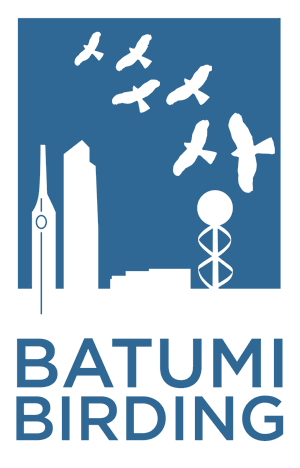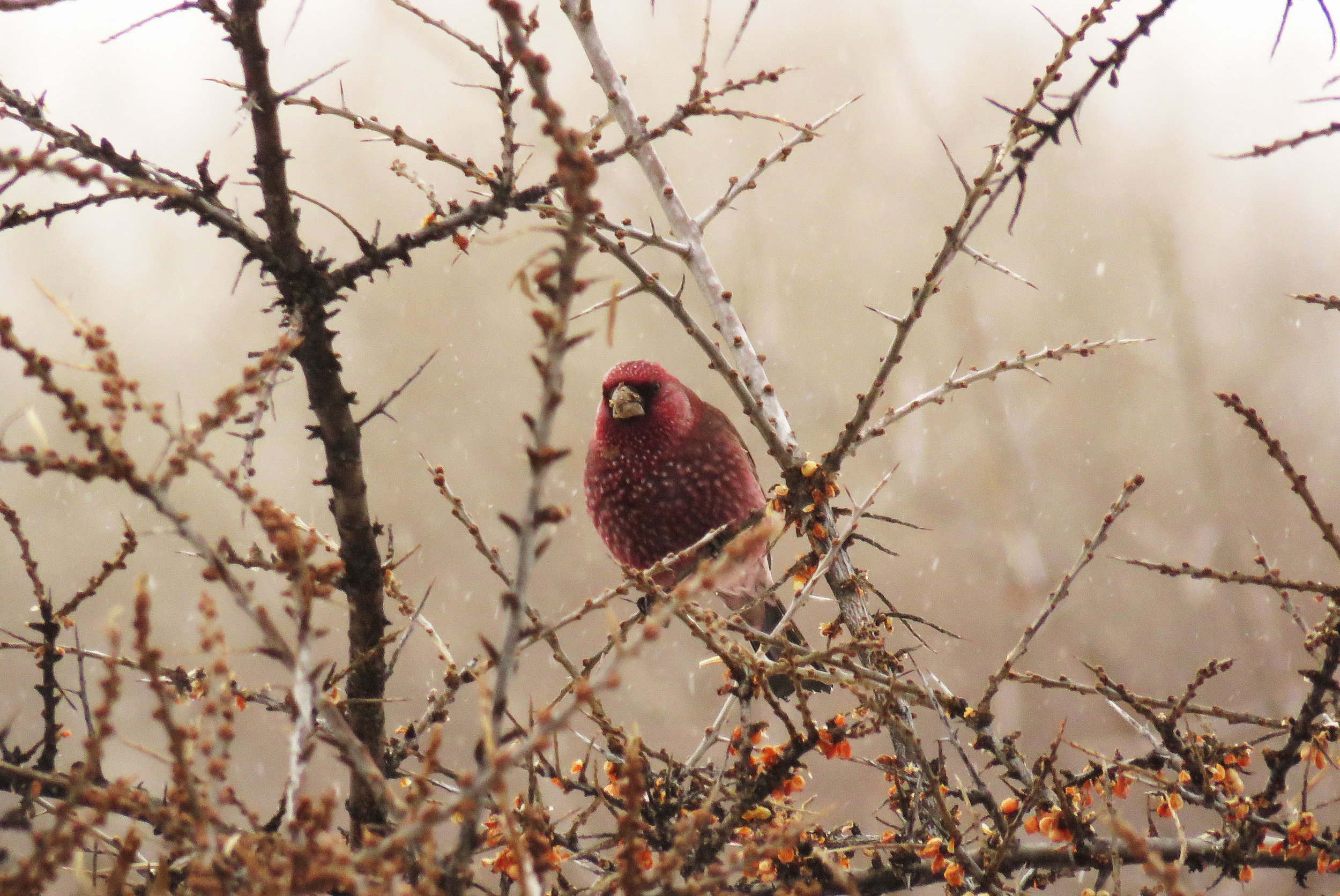This trip offers a combination of Caucasian high-mountain specialties and huge numbers of wintering birds, with the potential of finding a number of highly-wanted West Palearctic rarities! The mountain species are easy at this time of the year, as they come down to the valleys to winter, and we will find flocks of Great Rosefinch, Guldenstadt’s Redstart and Red-fronted Serin. Georgia's eastern steppes form the wintering grounds of massive numbers of Calandra Larks, flocks of Little Bustards and lots of raptors. Pallas' Gull will be one of the highlights on inland lakes. And with luck, we might find one of the rare larks, like Black, White-winged or Oriental Skylark.
We hope you will have unforgettable 7 days with us!
By taking part in this trip, you support conservation acitivities run by (SABUKO) the BirdLife partner in Georgia.
Target species
Great Rosefinch, Guldenstadt’s Redstart, Wallcreeper, Caucasian Snowcock, Caucasian Back Grouse, Alpine Accentor, Twite, Horned Lark, Red-fronted Serin, Steppe Eagle, Black Woodpecker, Kruper’s Nuthatch, Imperial Eagle, Black Francolin, Pheasant, White-tailed Eagle, Dalmatian Pelican, Pygmy Cormorant, Calandra Lark, Pallid Harrier, Saker and Peregrine Falcons, Merlin, Little Bustard, Spanish and Rock Sparrows, Bramblings, Yellowhammer, Pine Bunting, Black, Bearded and Griffon vultures, Rock Nuthatch, Chukar, Lanner, Pallas’ Gulls.
Güldenstädt's Redstart. Photo by Kristian Goner.
Day-by-day program
March 1: Arrival in Tbilisi and straight to Kazbegi
Black Francolin. Photo by Kristian Goner.
After arrival at Tbilisi airport, we will drive straight to the mountain village of Kazbegi, where we will pass the next two days. Upon arrival and fresh up in Kazbegi, we will explore the valleys, partly walking and partly driving.
Night in Stepantsminda
March 2: Caucasian endemics
In winter, Great Rosefinches and Güldenstadt’s Redstarts come down to the Terek Valley to winter in sea buckthorn bushes. You can find small flocks of the rosefinch, while the redstart is everywhere. This is the definitely the best season to get good views and pictures of these elusive birds. Nearby cliffs along the river usually host several Wallcreepers. Later in the day, we will explore the surrounding valleys for Caucasian Snowcock, Caucasian Back Grouse and East Caucasian Tur. Other targets include Alpine Accentor, Twite, Horned Lark and Red-fronted Serin. If the weather is good, we are likely to get some early migrants, mostly Steppe Eagle.
Night in Stepantsminda
Great Rosefinch. Photo by Dachi Shoshitashvili
March 3: Going east
We will spend the morning and early afternoon in Kazbegi to enjoy more great views of the Rosefinches and Redstarts, or to find any species we may have missed. Later we drive east towards the steppe zone to Dedoplistskaro. The town is located in the Shiraki Plain, eastern Georgia, and functions as a municipality of the eponymous district.
Night in Dedoplistskaro
March 4: Chachuna reserve
The Chachuna Protected Area consists of pristine riverine forest along the Iori river. Here a breeding pair of Imperial Eagle is found every 5km, while the rare Black Francolin and Pheasant (native to Georgia!) inhabit the undergrowth. White-tailed Eagles are also common, especially around the Dali reservoir, which is also great for wintering waterfowl, including Dalmatian Pelican and Pygmy Cormorant.
Night in Dedoplistskaro
Chachuna Reserve. Photo by Hugh Jansman.
March 5: Vashlovani NP
Demoiselle Cranes. Photo by Kristian Goner.
We will spend most of the day on the Shiraki agricultural plains, where huge numbers of Calandra Larks winter. Flocks of thousands are a common sight. Raptors are everywhere here: Imperial and Steppe Eagles, Hen and the occasional Pallid Harrier, Saker and Peregrine Falcon, Merlin. Depending on the weather, Little Bustards may number from tens to thousands. A delight to watch are the flocks of passerines, with Spanish and Rock Sparrows, Bramblings, Yellowhammer and sometimes Pine Bunting. Once we get closer to the Vashlovani National Park, vultures will start to appear: Black and Griffon breed in the park, whereas Bearded comes down to the plains in winter.
Night in Dedoplistskaro
March 6: On the way back to Tbilisi via Eagle canyon
We will get up early in the morning, first visiting nearby Eagle canyon, followed by the drive towards the Kojori forest where will look for Krüper's nuthatch.
Night in Tbilisi
March 7: Kumisi and Jandari Lakes
On this last day, we will visit the lakes south of Tbilisi. At Kumisi we cannot miss the Pallas’ Gulls, while Jandari usually brings Dalmatian Pelican and Pygmy Cormorant. The agricultural fields and steppes around these lakes are great for raptors and passerines, and we will certainly pick up a few surprises here.
We’ll finish the trip with a great traditional Georgian dinner in Tbilisi!
Night in Tbilisi
March 8: Departure
We will make sure you catch your flight back home.
When
1 to 8 March 2026
Price & Booking
Please contact us for detailed information about the prices using the form below or by sending an email to info@batumibirding.com.


